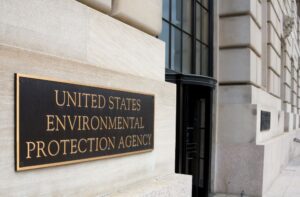In the second quarter (Q2), the EPA finalized 388 settlement agreements with companies small and large across the United States. This represents a large increase in enforcement actions—up from 235 penalties—issued in Q1 for 2024. The actions taken resulted in $11,061,445 in fines. Here are some of the highlights.
CAA violations yield biggest fine from EPA
The largest fine assessed by the EPA in Q2 was to a chemical manufacturer in Louisiana for a penalty of $1,441,712 for violations of the Clean Air Act (CAA). In 2021, the EPA conducted a virtual Partial Compliance Evaluation (PCE) of the facility to determine compliance with the chemical accident prevention provisions of the CAA. In January 2022, the EPA sent the company a Notice of Potential Violation and Opportunity to Confer (NOPVOC) letter. In June 2022, the EPA met with the company to discuss the letter. In October 2022, there was an incident at the facility that resulted in an accidental release of approximately 17,598 pounds of aluminum triethyl. The incident resulted in an on-site chemical fire at the facility and a shelter-in-place order for the surrounding community.
Following the incident, the EPA requested, and the company provided, further documentation and information concerning the incident and compliance with chemical accident prevention. The EPA determined 19 CAA violations, including failure to allow timely review and evaluation, ensure performance, and provide available information.
There were additional enforcement actions taken against 40 other entities for CAA violations, with penalties that ranged from $195 to $1,250,000. In all, CAA violations accounted for $6,134,510 in Q2.
RCRA violations bringing six-figure fines
The EPA continues its consistent enforcement for Resource Conservation and Recovery Act (RCRA) violations:
- A zinc and lead mine in Alaska was penalized $429,794 for violations of the RCRA hazardous waste generators standards. The EPA alleges that the company failed to properly determine that wastes generated in its laboratory were hazardous wastes and further stored, treated, and disposed of hazardous waste without a RCRA permit. As part of the terms of the settlement, the company will spend $50,000 to upgrade sump equipment to meet RCRA closure performance standards, which will result in preventing approximately 29,000 pounds of hazardous waste from entering the environment each year.
- A Louisiana petroleum products company was fined $332,457 to resolve RCRA violations related to generators of hazardous waste. Specifically, the company violated the following sections of RCRA:
- Hazardous waste determination and recordkeeping;
- Satellite accumulation area regulations for small and large quantity generators;
- Conditions for exemption for a large quantity generator that accumulates hazardous waste; and
- Testing, tracking, and recordkeeping requirements for generators, reverse distributors, treaters, and disposal facilities.
EPCRA violations
A pulp and paper product manufacturer in Idaho was penalized $322,088 to resolve violations of the Emergency Planning and Community Right-to-Know Act (EPCRA) and the Comprehensive Environmental Response, Compensation, and Liability Act (CERCLA). The facility violated EPCRA and CERCLA when it failed to timely report releases of chlorine to the National Response Center (NRC), the State Emergency Response Commission (SERC), and the Local Emergency Planning Commission (LEPC).
A Massachusetts-based electronics manufacturer was fined $117,647 and entered into a consent agreement to resolve various EPCRA and CAA violations. The violations were related to the company’s storage and use of anhydrous ammonia at its glass-to-metal seal and high-temperature co-fired ceramic manufacturing facility. The company violated the CAA by failing to conduct a process hazard review for the ammonia used at its facility. The company violated EPCRA by failing to timely submit and certify Toxics Release Inventory (TRI) reporting forms for anhydrous ammonia used at the facility in 2019, 2020, and 2021.
Emphasizing clean water
The EPA cited 96 different entities for violations of the Clean Water Act (CWA), including oil and construction companies, for inadequate Spill Prevention, Control, and Countermeasure (SPCC) plans, as well as towns and cities for National Pollutant Discharge Elimination System (NPDES) permit violations. The fines totaled $1,079,931 and ranged from $300 to $290,773.
FIFRA violations
A multipurpose manufacturer in Texas was penalized $100,000 and entered into a consent agreement to resolve violations of the Federal Insecticide, Fungicide, and Rodenticide Act (FIFRA). The violations included the sale of unregistered pesticides (187 counts) and producing pesticides in an unregistered establishment.
A Georgia-based aerosol spray manufacturer was fined $86,600 and entered into a consent agreement to resolve FIFRA violations. During an EPA inspection at the company’s facility in February 2023, the inspector collected labels for the registered pesticides, as well as invoices showing the company’s sale and distribution of these pesticides, between March 2022 and February 2023. The EPA alleges that the company violated FIFRA by distributing and selling, as well as holding for distribution or sale, the specified misbranded pesticides on one or more occasions.

